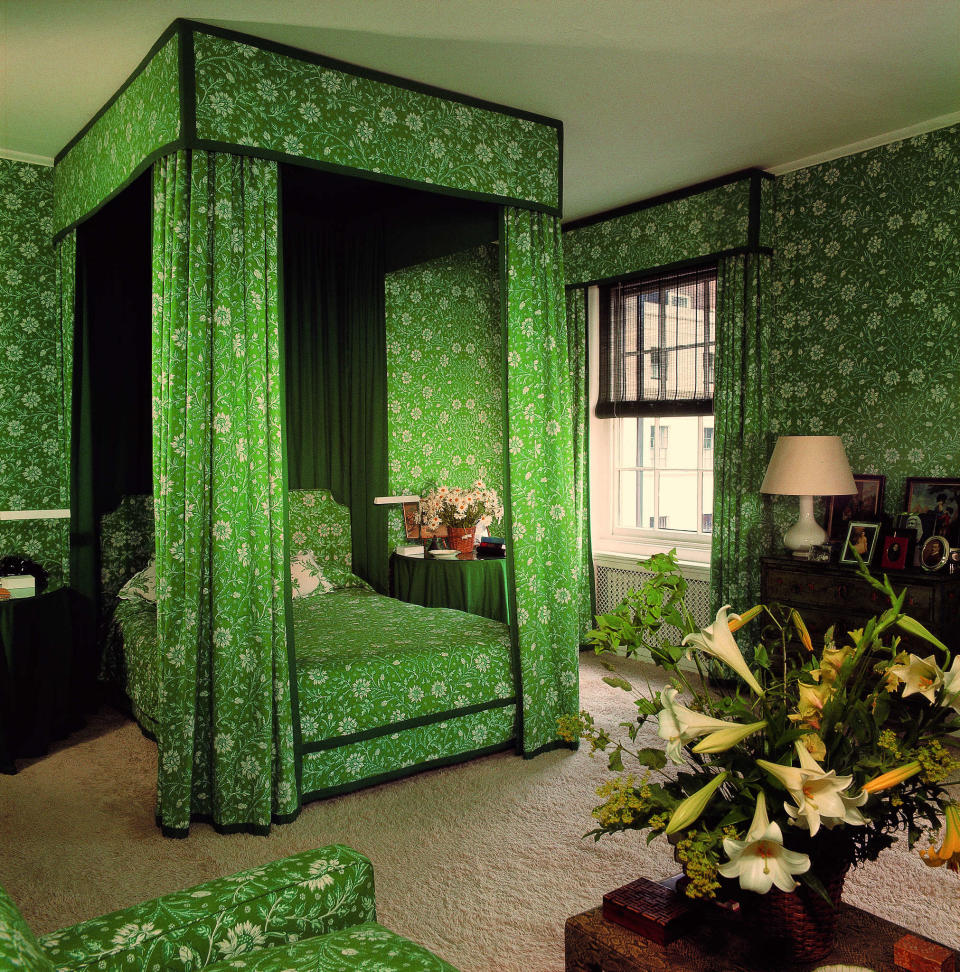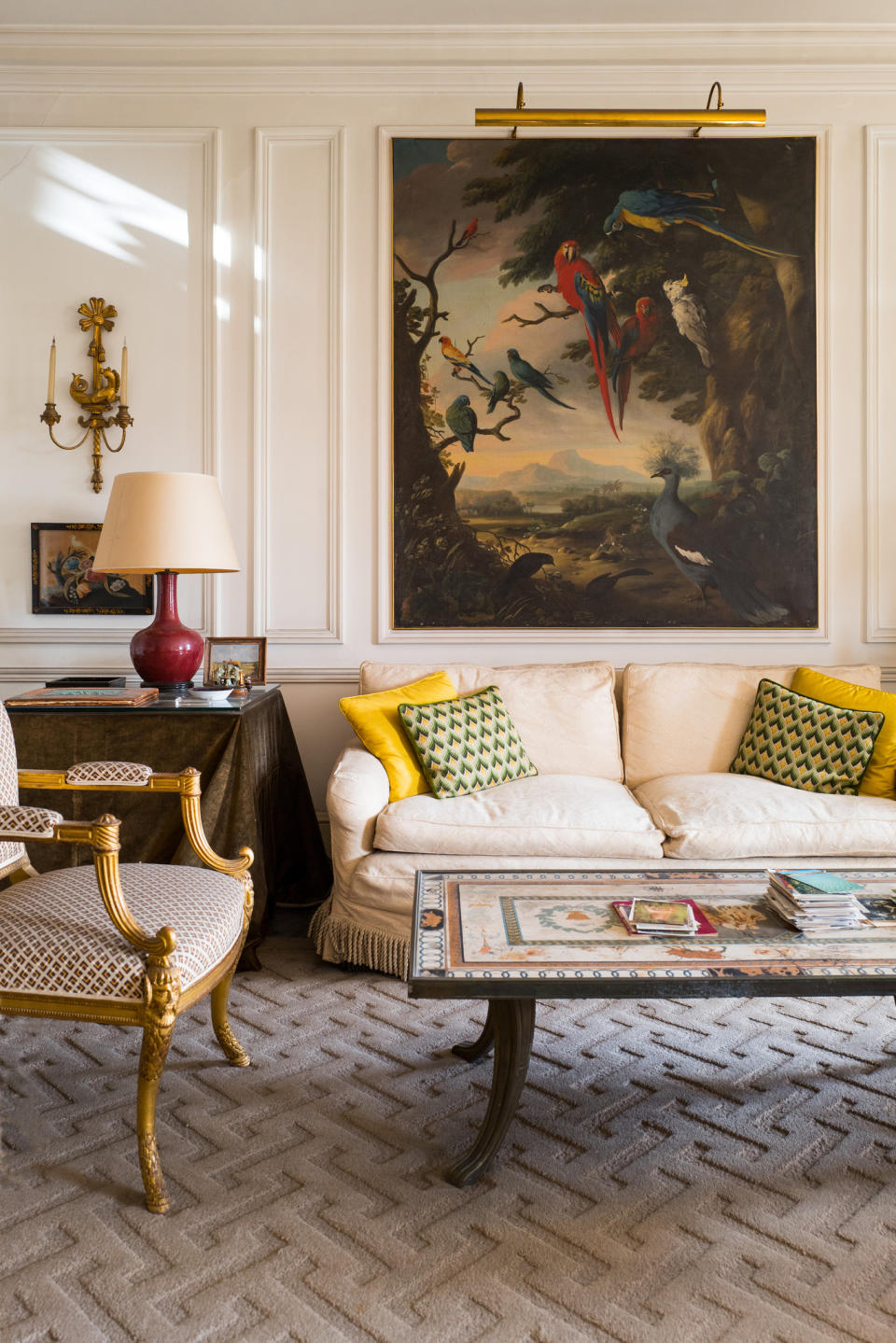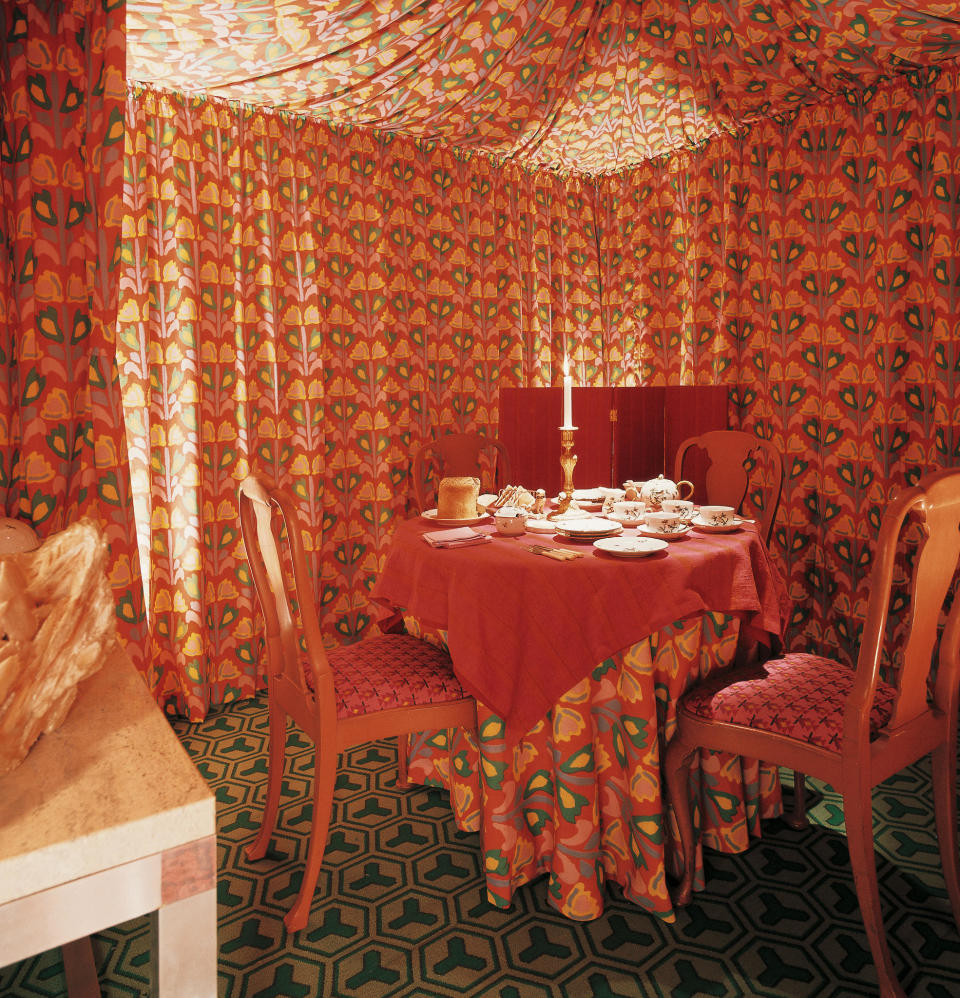Tangerine Dreams: Cabana Releases ‘David Hicks in Colour,’ the First of New Book Series

LONDON — The David Hicks color wheel is rolling through town, showcasing the interior designer’s aesthetic to new generations who maybe never considered turning their walls Coca-Cola brown; hanging cabbage green curtains in the living room, or snoozing on a saffron yellow sofa.
Hicks, whose heyday was the late ‘60s and ‘70s and who decorated the homes of myriad British aristos, nouveau riche millionaires and fashion designers, may have faded into semi-obscurity, but that’s about to change.
More from WWD
He’s poised for a revival this year with a new book, “David Hicks in Colour.” Edited by his son Ashley Hicks, the foreword is by one of Hicks’ famous fans, Tory Burch, who recalls leafing through the late decorator’s books as a child and swooning over the “audacious hues, mixed prints and lush gardens,” all of which inspired her brand’s design aesthetic and mission “to live in full color.”

The book launched in the U.K. earlier this month, with Ashley Hicks and Cabana’s cofounder Martina Mondadori promising even more pattern and color to come. They’re planning a pop-up restaurant during Milan’s Salone del Mobile next month in collaboration with Da Giacomo.
Café Cabana Giacomo will be located in the courtyards of the museum Palazzo Morando in Via Sant’Andrea and will showcase Cabana’s David Hicks-inspired spring 2023 collection.
It includes Murano glassware and plates that reflect Hicks’ love of sharp geometric patterns. The café space will also be filled with custom Bonacina seating featuring fabrics from a new collaboration between Liberty and the designer Federico Forquet.
It’s a big moment for Cabana.
“David Hicks in Colour” is the first in a series of print books that the magazine-cum-lifestyle brand plans to publish.

In an interview alongside Hicks, Mondadori says there is so much unused material sitting in Cabana’s files waiting for a home, including images of far-flung lands, architecture and culture captured by the magazine over the years. Cabana was founded in 2014 by Mondadori, Christoph Radl and Gianluca Reina.
“We have the audience, the direct audience, it will almost be like a book club,” says Mondadori, adding that the U.S. has become the biggest market for the biannual Cabana magazine, and for the home and interiors products on its website.
As for David Hicks and his punchy colors, Mondadori says it was time that a new generation got to know his aesthetic.
The books that Hicks wrote and self-published were — ironically — in black-and-white. They are also out of print. While there have been several others written about him over the years, Hicks remains fixed in the 20th century.
“My generation won’t have seen a lot of his things, unless they are very, very interiors-obsessed. And what they would have seen would not have necessarily been in color,” says Mondadori.
She adds that Hicks, who died in 1998, would have connected easily with today’s audience. “He was the most Instagrammable interior decorator before the Instagram age. That’s the reason he feels so relevant to a new generation,” she says.
Ashley Hicks used images from his father’s archive (which he saved from being discarded after David Hicks’ death) and organized the book by color. The table of contents resembles a Pantone card. Ashley also reprinted the written color schemes that appeared in David’s first books from 1966.
There are separate columns for walls, curtains, carpet, sofa, chairs, cushions, flower arrangements — and color combinations for each room.
Ashley says he finds the schemes amusing. “That instruction manual from his first book is quite funny, and one longs to know whether people actually followed it — and whether they had difficulty getting the orange flowers to fit” in the beige or yellow room, he says.
Organizing the book by color, he adds, “was just an interesting way to look at [my father’s] work again. He did very color-saturated rooms. He loved a completely green room, for example, playing on all the different shades,” says Ashley, adding that his father worked quickly — and ruthlessly — deciding on a single color scheme for one room, and doing something completely different for the next.
“He would do a room in about five minutes, sitting with the client and his assistant. And he would say, ‘Now, the guest bedroom…let’s have chocolate brown walls, and toffee-colored curtains with an orange velvet braid — that would be maaaah-vellous,’” says Ashley, imitating his father’s voice.
David Hicks was from an upper-middle-class Essex family, and married up — to Pamela Mountbatten, the younger daughter of Lady Edwina and Lord Mountbatten, the last viceroy of India. They had three children — Edwina, an artist; Ashley, a furniture designer, architect and painter, and India, a designer, entrepreneur, model and author.
Their mother Pamela Hicks is an author, with her next book “My Years With the Queen, and Other Stories” set to be published in February 2024 by Ebury Spotlight. It details her life as a lady-in-waiting to Queen Elizabeth II.

Ashley says if the client didn’t agree with David’s color scheme, he’d come up with another one a couple of minutes later, eager to move on and get the job done.
While Hicks loved color and pattern, there was another reason why he’d choose such dramatically different color schemes for the same house.
“The aim of his life was to fill up his scrapbooks with magazine pages, newspaper pages, everything about him. He realized that if he absolutely made sure that every room was intensely photograph-able and completely different from every other room with its own color scheme, then he’d get 10 different photos published, instead of one,” recalls his son.
Hicks was radical in other ways, too, eschewing British chintzes in favor of a mid-century minimal, Bauhaus sensibility.
“When you look at his rooms, almost all of them are extremely simple. It’s a sort of minimalism. It’s simplicity, simplicity, simplicity. In the early bedrooms he designed, he used one fabric on the walls, the bed curtains, the curtains of the room, and the furniture,” says Ashley.
Hicks also hated what he deemed to be nouveau riche. “These were things that rich people rather wanted — very, very expensive velvet and shiny satin or silk. And he absolutely loathed them. He did find much more beauty in simple, rough materials,” and they weren’t necessarily cheaper than the velvets and silks, says Ashley.
That fresh approach and the rejection of conventional, four-star hotel luxury, dovetails with Mondadori’s reasons for starting Cabana, and publishing books about design and atmosphere.
“I needed to see soulful interiors again, interiors by people who actually decorated their homes, according to their own vision, rather than being inspired by a hotel room,” says Mondadori.
David Hicks might have thought her idea was just maaaah-velous.
Best of WWD

 Yahoo Movies
Yahoo Movies 
